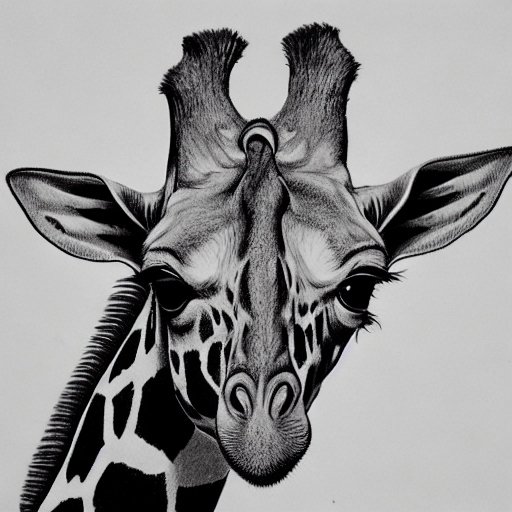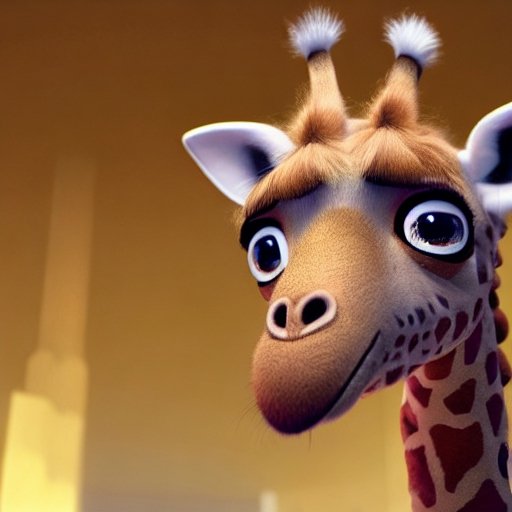The Marvelous Giraffe: A Deep Dive into the World's Tallest Mammal
This article came from the Machine. I prompted it to rewrite (and outrank) the Wikipedia article for “Giraffe”. It assured me that such a task could be done, and here’s what it created. I cannot promise that anything in this article is true.
Introduction
The giraffe, a magnificent creature of towering height, stands proudly as the world's tallest mammal. This striking animal, belonging to the family Giraffidae, carries an air of awe and wonder that few creatures can match. Its unique physical features and fascinating behavior make the giraffe a spectacle of the natural world.
Unraveling the Giraffe's Genetic Makeup
The giraffe is scientifically classified as 'Giraffa', and it's intriguing to note that it has several subspecies, each exhibiting subtle differences in their coat patterns and geographical distribution. The subspecies include the South African, Masai, Reticulated, and Rothschild giraffes, among others.
The Giraffe's Imposing Stature
One cannot discuss the giraffe without acknowledging its most iconic feature – its incredible height. Adult giraffes often stand between 4.5 to 6 meters tall, with males typically being taller than females. This immense stature allows giraffes to browse on leaves and shoots located high up in the treetops, beyond the reach of other herbivores.
Anatomy of a Giraffe: A Closer Look
Giraffes are blessed with several unique physical attributes that aid in their survival. Their long, muscular necks, despite their length, contain the same number of vertebrae as a human neck – just seven. Their necks, in combination with their towering legs and an extended tongue that measures up to 45 cm, grant them access to foliage that other savannah browsers simply can't reach.
Their distinctive coat, made up of uniquely patterned, polygonal patches, not only adds to their striking appearance but also aids in thermoregulation. Each patch is separated by a network of thin skin that releases body heat, helping the giraffe stay cool in its warm African habitat.
The Giraffe's Peculiar Walk
One of the giraffe's most charming quirks is its distinctive gait. Giraffes move both legs on one side of the body and then both legs on the other side, a movement known as 'pacing'. This unique walk is a sight to behold and distinguishes them from most other mammals.
The Giraffe's Social Structure
Giraffes are social animals, often found in groups known as 'towers'. Interestingly, these groups are quite fluid, with individuals regularly moving between different towers. This social flexibility is a testament to the giraffe's complex social dynamics.
The Giraffe's Role in Ecosystem
Giraffes play a crucial role in their ecosystem. They act as important pollinators and seed dispersers for a variety of plants. Their browsing habits also help to regulate the growth of vegetation in their habitat, contributing to a balanced ecosystem.
Conservation: Safeguarding the Future of Giraffes
Sadly, giraffes face numerous challenges in the wild, including habitat loss, poaching, and climate change. Conservation efforts are critical to ensure their survival. These initiatives include protected areas, anti-poaching measures, and community-based conservation programs.
The Giraffe's Unique Physiology: A Deeper Understanding
The giraffe's distinctive height comes with a set of unique physiological adaptations. For instance, to pump blood up to its brain, the giraffe possesses a heart that is extraordinarily large and powerful, often weighing up to 11 kilograms and measuring 60 centimeters in length.
Their cardiovascular system is also ingeniously designed to combat the rapid decrease in blood pressure that could occur when the giraffe lowers its head to drink. A complex pressure regulation system, known as the 'wonder net', prevents excessive blood flow to the brain during these moments.
Diet: What Does the Giraffe Eat?
The giraffe is a browser herbivore, feeding primarily on the leaves and shoots of more than 100 species of plants, with a particular fondness for the thorny acacia tree. Despite their size, giraffes require less food than many other herbivores, as their diet of nutrient-rich leaves provides them with much of what they need. Giraffes also have a four-chambered stomach, much like a cow, which aids in the digestion of these leaves.
Giraffe Behavior: A Glimpse Into Their Daily Life
Giraffes lead a life that can be characterized as 'eat, ruminate, and rest'. They spend most of their day eating, and when not eating, they are often seen ruminating - a process where they re-chew their food to aid digestion. Surprisingly, giraffes only need 5 to 30 minutes of sleep in a 24-hour period, often taken in short naps.
In terms of their social behavior, giraffes are non-territorial and socialize freely among different sexes. Male giraffes, however, do engage in a behavior known as 'necking' to establish dominance or win mating rights.
The Giraffe's Reproductive Cycle
Female giraffes reach sexual maturity at around five years, while males are a bit later at around seven years. The gestation period for giraffes is approximately 15 months, one of the longest in the animal kingdom. After birth, the newborn, called a calf, can stand and run within an hour, a crucial survival adaptation in the predator-rich African savanna.
Conclusion: The Giraffe's Continued Legacy
The giraffe, with its distinctive silhouette, has long been a source of fascination and admiration. Its impressive height, unique adaptations, and intriguing social behavior make it one of the most captivating creatures on the planet. Ensuring the survival and prosperity of these gentle giants is crucial, not only for maintaining biodiversity but also for the continued enrichment of our natural world.
The Giraffe's Lifespan
The lifespan of a giraffe in the wild typically ranges between 20 to 25 years, a testament to their resilience and adaptation to the challenging environment of the African savanna. In captivity, with constant access to nutrition and absence of predation, giraffes have been known to live up to 30 years or more.
The Sounds of Silence: Giraffe Communication
Contrary to popular belief, giraffes are not silent creatures. While they are usually quiet, they can make a variety of sounds, such as moos, hisses, roars, and even whistles. However, giraffes primarily communicate non-verbally, using visual and tactile signals. Recent research also suggests that they communicate at an infrasound level, much like elephants, which is too low for human ears to detect.
Giraffes and Humans: A Historical Perspective
Giraffes have a rich history of interaction with humans. Their images have been found depicted in rock art dating back more than 8,000 years. Throughout history, giraffes have fascinated humans with their unique appearance, leading to their prominence in myths and folklore across many African cultures. Today, they continue to be a major attraction in zoos and wildlife parks around the world.
The Giraffe: An Icon of African Wildlife
The giraffe, along with the elephant and lion, is among the most iconic symbols of African wildlife. Their towering height and distinctive patterning make them one of the most easily recognizable animals on the planet. As such, they play a crucial role in wildlife tourism and are a key attraction for visitors to Africa's many national parks and reserves.
In Conclusion: Our Continued Commitment to Giraffe Conservation
The giraffe, a magnificent creature that holds the title of the world's tallest mammal, faces an uncertain future. Their populations in the wild are under threat from habitat loss, poaching, and climate change. It is our duty to protect these gentle giants and ensure their survival for generations to come.
By supporting conservation efforts and promoting sustainable practices, we can help secure a future for giraffes and the rich biodiversity of their habitats. As we learn more about these fascinating creatures, we deepen our connection to the natural world and strengthen our commitment to its preservation. The giraffe's story is a reminder of our responsibility to safeguard the planet's biodiversity and the essential role each species plays in the intricate web of life.

